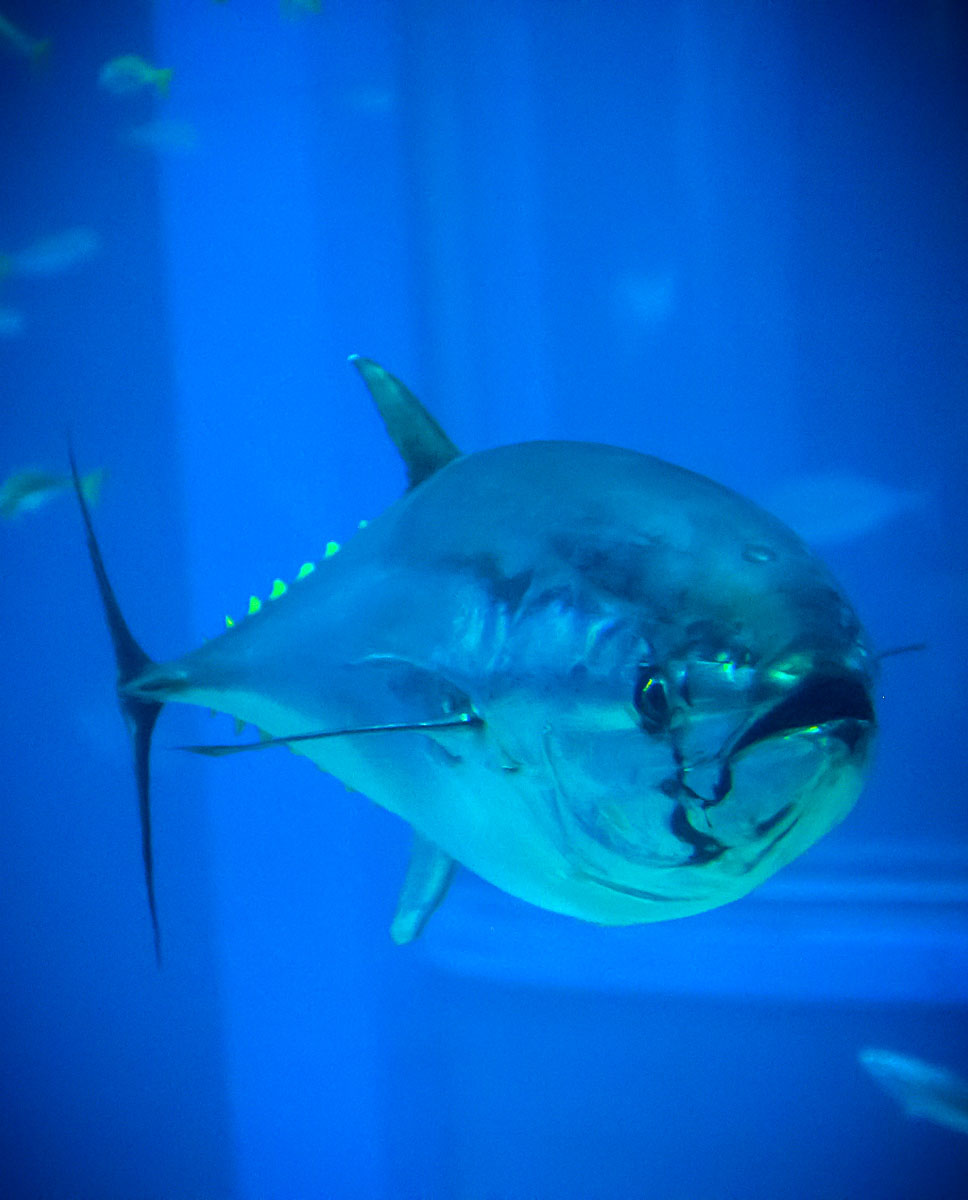Also known as "Bluefin Tuna", it is widespread in the tropical, subtropical and temperate waters of the Atlantic Ocean, in the Mediterranean Sea and in the southern Black Sea and prefers waters at temperatures above 10 ° C. It is found mainly offshore and approaches the coasts only at certain times of the year, usually near islands or headlands. It feeds mainly on fish and cephalopods.
The color is dark steel blue on the back, sometimes almost black. The belly and flanks are silvery-white and sometimes have indistinct paler spots on the underside. The pinnules are yellow, the other fins gray, except for the second dorsal which is red-brown. It is one of the largest fish in the Mediterranean: it exceeds 3 m in length and, until now, a 725 kg heavy specimen has been recorded.
The tuna face an erratic phase, moving in small groups composed of fish of the same size; subsequently they gather in more dense groups, during a following gregarious phase, which coincides with the beginning of the reproductive season. At this time many fishes migrate to the breeding areas.
They live for most of their life in the North Atlantic, but in spring they gather in large groups and migrate to the Mediterranean, where they reproduce. In the fall they return to the ocean. During this phase they do not eat, so the meats are less fat and tasty than in the previous phase. Due to this aspect, fishing takes place mainly in late spring, since in this period it is possible to catch specimens whose meat has a greater commercial value. However, it seems that not all tuna migrate: there are also sedentary populations both in the Mediterranean and in the Atlantic. The Mediterranean ones tend to sink in winter.
The spawning takes place in the summer in less frequented waters, slightly closer to the coasts. The growth is very rapid: at the age of one year the fish measures about 70 cm and weighs from 3 to 5 kg. It reaches sexual maturity at 2-4 years, when it is about 1 m long and weighs no less than 15 kg.
This fish has enormous commercial importance. Its meat is highly sought-after, especially by the Japanese, who buy about 80% of the Mediterranean tuna, in order to prepare sashimi and sushi. Due to the scarcity of the raw material and its price, only a few companies use the meat of the bluefin tuna for traditional preserves in oil.




